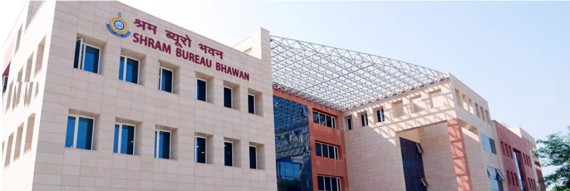Background of Labour Bureau
- Labour Statistics in India may be said to have originated when the first national population census was conducted in 1872. This census gave not only the count of number of persons, but also the number of gainfully employed. Since then every census has thrown useful data on workers in different industries and occupations every 10 years. Besides the statistics on employment thrown by the census, other data on labour statistics were collected on ad-hoc basis, mostly as a byproduct of administration of labour laws and not as a basis for formulation of labour policies.
- Then, the Government of India, in Shimla, in the year 1920, established Labour Bureau, originally known as “Indian Labour Bureau”. It was established under the Board of Industries and Munitions. Mr A.G. Claw, I.C.S was the Controller of Bureau and Miss G.M. Broughton, C.B.E., I.E.S. was appointed as Lady Adviser. The main functions of Bureau were the collection of all information on labour in India, interaction with the ILO and other similar institutions in other Countries. It acted as a reference centre for all interested in Labour related subjects and for Officers of Government and private sector, which were to deal with labour. With these objectives, Labour Bureau was established.
- The Royal Commission on Labour in 1931 pointed out the need for systematic collection of labour statistics. It observed that the policy must be built on facts as the uncertainty of facts would lead to confusion and conflict regarding its aim. The Commission recommended the adoption of suitable legislation enabling the commission to collect and collate information regarding the living, working and socio-economic conditions of industrial labour. Further, the inflationary pressure during the early period of the Second World War gave rise to demands of workers for compensation in their wages necessitating setting up of machinery for measuring changes in prices. Accordingly, Government of India constituted & set up the Rau’s Court of Enquiry in 1940 under the Trade Disputes Act (1929) to recommend statistical machinery for measuring movement in prices. The Rau Court of Enquiry recommended compilation and maintenance of Cost of Living Index Numbers for measuring the rate of compensation to be paid to the workers for the rise in cost of living.
- This recommendation of the Rau Court of Enquiry (1940) led to setting up of the Directorate of Cost of Living at Shimla in 1941 with the objective of conducting Family Budget Enquiries and compiling Cost of Living Index Numbers for important centres in the country on a uniform basis. The Directorate conducted enquiries during the period 1943-45.
- However, with the increased Government intervention in the field of industrial relations during the Second World War, the need for more systematic collection and processing of labour statistics acquired significance. The result was the enactment of Industrial Statistics Act in 1942 to facilitate collection of statistics on (a) matters relating to factories and (b) certain specified areas of welfare and conditions of labour. Further, arrangements were made for the collection and processing of the data flowing from the administration of important labour Acts, such as the Trade Unions Act, 1926 and the Payment of Wages Act, 1936, etc.
- Finally, the need for more comprehensive labour statistics in the context of formulation of labour policy led to the setting up of the Labour Bureau in October 1946 by rechristening the Directorate of Cost of Living with added functions. Since then Labour Bureau is engaged in collection, compilation, analysis and dissemination of statistics on different facets of labour at All India level
-
Labour Bureau, set up on October 03, 1920, is premium organization in the field of labour statistics and is engaged in the collection, compilation and publication of price indices, employment, unemployment, wages, earnings, absenteeism, labour turnover, industrial relations and working and living conditions of different segments of labour.
-





